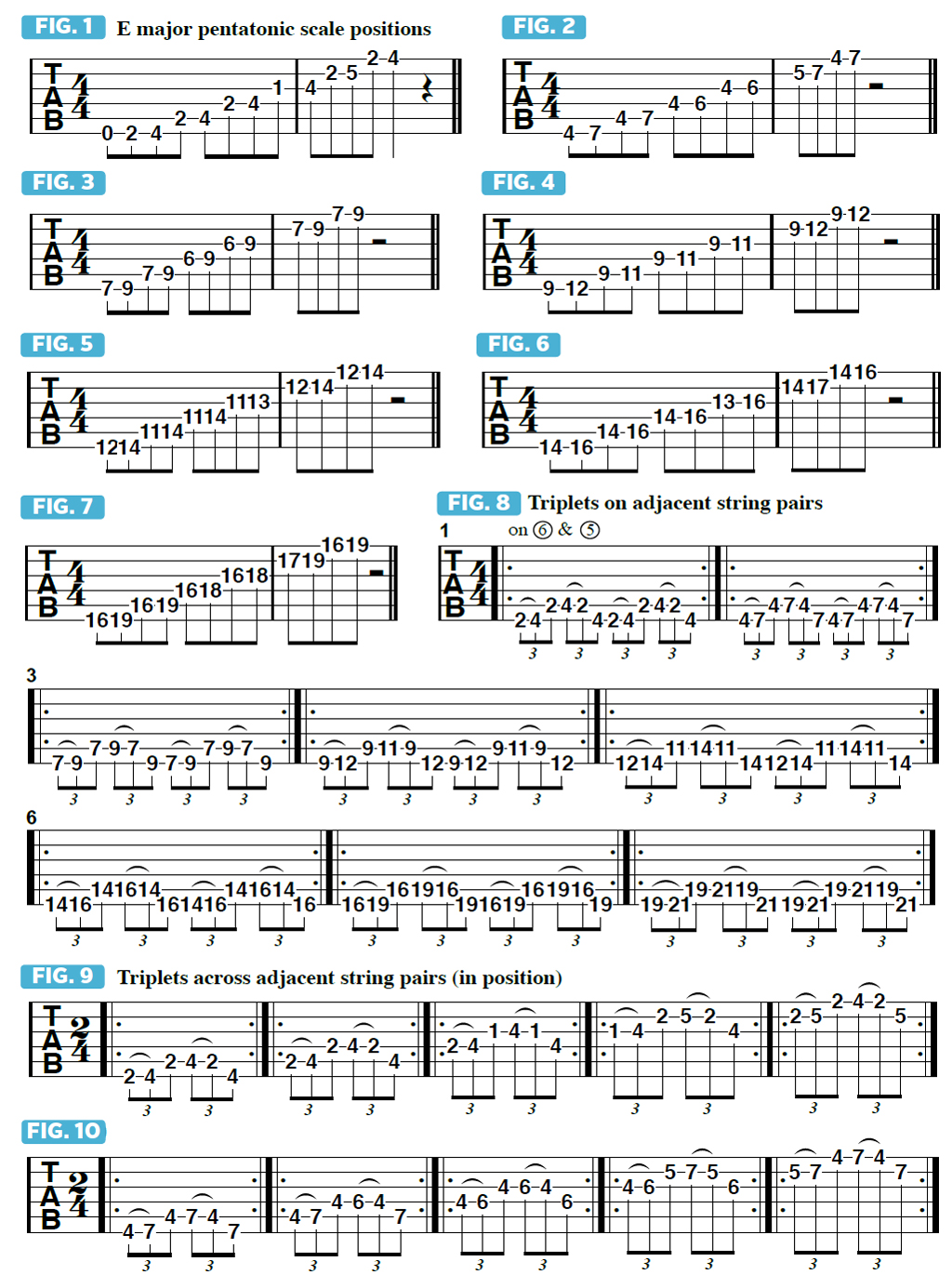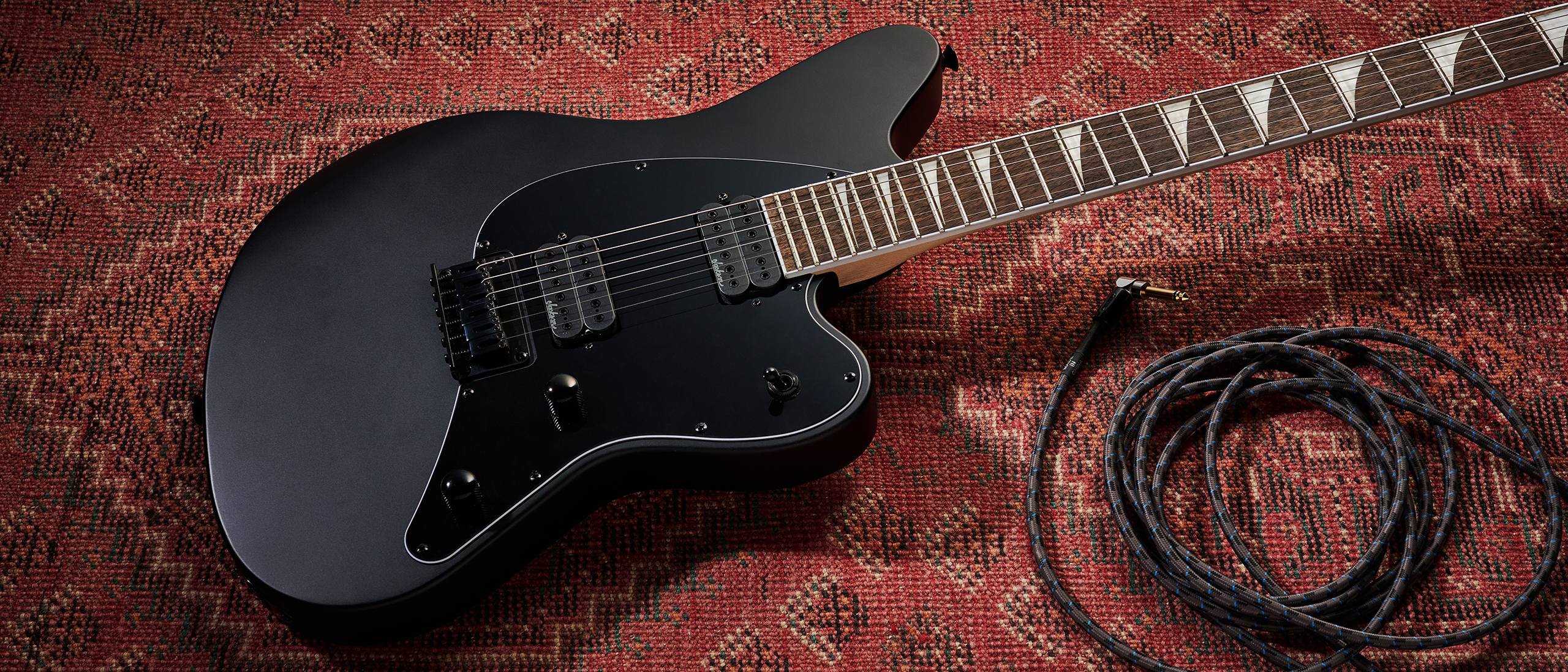Build a solid foundation for your soloing by learning major pentatonic scale positions and patterns
Pentatonics form the basis of an encyclopedia of lead lines, so it's important to grasp them fully
One of the eternal questions guitar players ask themselves is, “What should I practice?” as well as “How much and often should I practice, and how do I best utilize every practice session?” There are, of course, a myriad of answers to these questions, each of which is best suited to the needs and goals of the individual player.
But for any serious student of the guitar, a clear understanding of scale patterns will reap great benefits for every aspect of playing, and this is especially true in terms of developing one’s soloing abilities.
The scale heard and utilized most commonly in rock and blues is minor pentatonic. Pentatonic means “five-tone.” In the key of E, the five notes of E minor pentatonic are E, G, A, B, D. Spelled in terms of intervals, the scale degrees are 1 (root), b3 (flatted 3rd), 4, 5, b7 (flatted 7th). In the key of A, the five notes of A minor pentatonic are A, C, D, E, G.
Another essential pentatonic scale is major pentatonic. In the key of E, the five notes of E major pentatonic are E, F#, G#, B, C#. Again, in terms of intervals, the scale degrees are 1 (root), 2, 3 (major 3rd), 5, 6. In the key of A, the five notes of A major pentatonic are A, B, C#, E, F#.
All guitarists should do their best to master both the major and minor pentatonic scales in every key, especially the important guitar keys of E, A, D, G, B and C. All of the greatest blues and rock players, from B.B. King to Jimi Hendrix to Stevie Ray Vaughan, move seamlessly between minor and major pentatonic when soloing. The sound of shifting between the two scales is at the bedrock of the language of blues and rock music.

For now, let’s focus on the scale positions of E major pentatonic, as illustrated in FIGURES 1-7. FIGURE 1 is played in 1st/2nd position, so use either your index or middle finger to fret the second note shown, F#.
Be sure to use your index finger to fret the G# at the 1st fret on the 3rd string at the end of bar 1. FIGURE 2 moves up to 4th position, so start with your index finger on G# (6th string, 4th fret) and use index, middle, ring and pinkie to fret the notes at the 4th, 5th, 6th and 7th frets, respectively.
FIGURE 3 is played in 6th/7th position, so begin with either your index or middle finger. FIGURE 4 moves up to 9th position. Again maintaining proper finger-to-fret assignments. FIGURE 5 illustrates the scale played in 11th position, FIGURE 6 depicts it in 13th/14th position, and FIGURE 7 shows the scale in 16th position. Ascend and descend through each pattern multiple times.
A great exercise is to practice repeating patterns of triplets on adjacent strings. In FIGURE 8, triplet figures played on the low E and A strings ascend the fretboard through each successive scale position. In FIGURES 9 and 10, triplets move across all of the strings in a fixed position.
Continue the process through every scale position available on the fretboard to attain a clear picture of the structure of each pattern in each position.
Get The Pick Newsletter
All the latest guitar news, interviews, lessons, reviews, deals and more, direct to your inbox!
Guitar World Associate Editor Andy Aledort is recognized worldwide for his vast contributions to guitar instruction, via his many best-selling instructional DVDs, transcription books and online lessons. Andy is a regular contributor to Guitar World and Truefire, and has toured with Dickey Betts of the Allman Brothers, as well as participating in several Jimi Hendrix Tribute Tours.
“He combined the passion of Gary Moore with riffs inspired by Zeppelin and Deep Purple, plus unexpected melodic twists like Ritchie Blackmore”: He was one of ’80s rock’s great journeymen – and his searing hot lead work inspired Marty Friedman
How to get better at guitar – 10 proven ways to improve your playing fast











